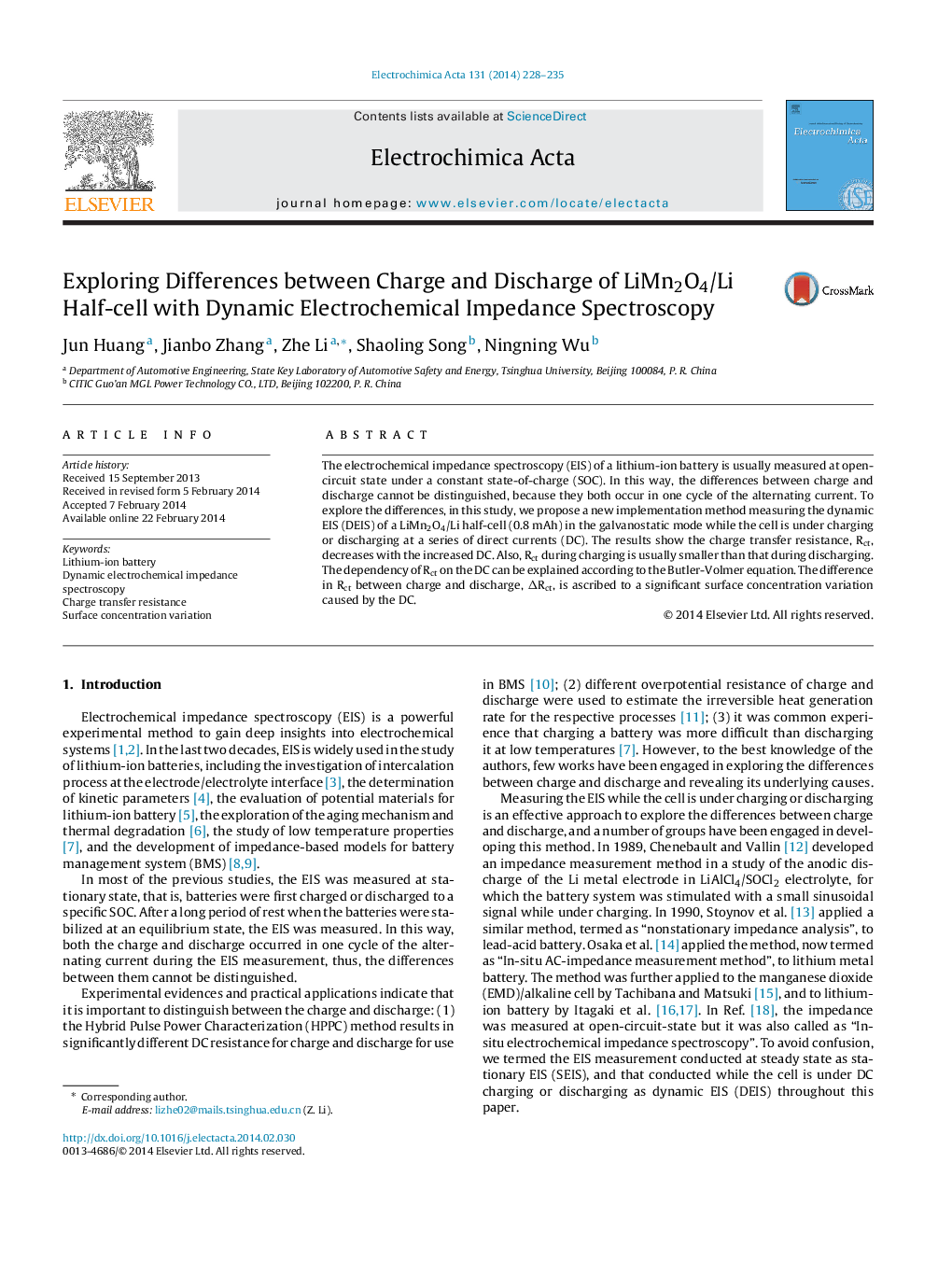| Article ID | Journal | Published Year | Pages | File Type |
|---|---|---|---|---|
| 185731 | Electrochimica Acta | 2014 | 8 Pages |
•The differences between charge and discharge was explored using dynamic EIS;.•At the same SOC, Rct during charge was usually smaller than that during discharge due to surface concentration change;.•The charge transfer resistance decreased with the charging/discharging current.
The electrochemical impedance spectroscopy (EIS) of a lithium-ion battery is usually measured at open-circuit state under a constant state-of-charge (SOC). In this way, the differences between charge and discharge cannot be distinguished, because they both occur in one cycle of the alternating current. To explore the differences, in this study, we propose a new implementation method measuring the dynamic EIS (DEIS) of a LiMn2O4/Li half-cell (0.8 mAh) in the galvanostatic mode while the cell is under charging or discharging at a series of direct currents (DC). The results show the charge transfer resistance, Rct, decreases with the increased DC. Also, Rct during charging is usually smaller than that during discharging. The dependency of Rct on the DC can be explained according to the Butler-Volmer equation. The difference in Rct between charge and discharge, ΔRct, is ascribed to a significant surface concentration variation caused by the DC.
